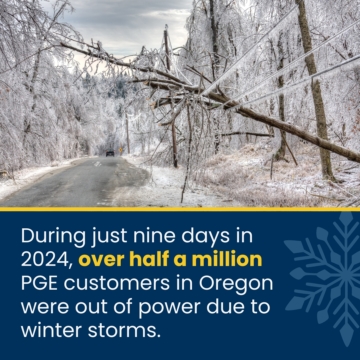Key Trends Electrical Pros Should Know About Microgrid Technology
Microgrid technology is changing the landscape of electrical power systems. These localized energy systems can operate independently or be integrated into larger power grids to supply reliable electrical energy. Microgrids typically come in five different types: commercial, military, campus environment, remote-off grid, and community. For example, Oregon is implementing two large-scale community microgrids: one in Salem and another in Ashland.
The Salem Smart Power Center stands as a beacon of innovation, encouraging utilities to explore novel methods for energy storage, grid backup, microgrid development, and renewable integration. As part of the U.S. Department of Energy’s Pacific Northwest Smart Grid Demonstration Project, the Center features a 5-megawatt lithium-ion battery and inverter system that can store 1.25 megawatt-hours of energy.
The Ashland microgrid, anticipated to generate 170,000 kWh of electricity annually, will feature a 75-kW dual-axis solar tracking system and lithium battery storage. Located at the City Service Center, this installation will enhance energy resilience for the city’s police and electric departments, as well as the fiber network, in the event of a grid outage.
What Benefits Do Microgrids Promise? 
These self-contained energy sources have far-reaching benefits for communities and the environment.
- Reliability During Power Outages: Oregon and Washington are no strangers to power outages. In Washington, one windstorm in 2024 left over 20,000 people without power. During just nine days in 2024, over half a million PGE customers in Oregon were out of power due to winter storms. Microgrids can provide additional energy support during outages and mitigate the frequency and length of outages.
- Supports Sustainable Efforts: Renewable energy sources can be integrated into microgrids, alleviating the dependence on fossil fuels.
- Grow with Energy Demands and Needs: Microgrids can easily grow and adjust to fulfill expanding community needs.
- Cost-Effective to Install: Microgrids are a more affordable option to traditional grid infrastructure due to their small and scalable design.
Shaping the Electrical Future: 4 Crucial Microgrid Trends
The energy landscape is ever-evolving, and microgrids are part of our electrical future. As microgrids continue to develop, the electrical industry can expect to see an increased focus on reliability, innovation, and sustainability. Here are four key trends in microgrid technology to watch in 2024 and beyond.
1) Renewable Energy Source Integration
Renewable energy source trends are enabling microgrid technology to help combat environmental concerns. Solar photovoltaic (PV) systems are being integrated into existing microgrids to boost sustainability efforts and improve energy efficiency.
2) Advanced Energy Storage
The rise and increased access to battery electric storage systems (BESS) are driving microgrid infrastructure. A BESS can store power over extended periods of time, including wind and solar-based energy. These systems enable users to deploy energy efficiently and on demand, which means a BESS has the potential to cover power outages instantly.
3) Virtual Power Plants
Virtual power plants (VPP) are decentralized energy networks that generate power units via wind farms, solar panels, and battery electric storage systems. Integrating VPPs into microgrid infrastructure can optimize electricity production and distribution. It can also strengthen grid stability and fight load pressures.
4) Regenerative Buildings
In recent years, there has been a movement towards regenerative buildings—aka buildings that produce more energy than they consume. Microgrids can support building-to-grid integration, which in turn can help the evolution of regenerative buildings.
These trends highlight the emerging microgrid technology and the potential for energy sector transformation. As microgrid technologies continue to advance, they will play an increasingly vital role in energy production and distribution.
NECA–IBEW Local 48: Shaping the Future of Electrical Innovation
Our aim is to set the benchmark in the electrical industry by exemplifying the highest standards of quality, skill, safety, value, and integrity, thus earning the trust and confidence of our customers and the community.
NECA members benefit from state-of-the-art technology training, safety compliance support, essential industry resources, connections with top electricians, employee education credits, and more. IBEW members can advance their careers with continuing education and training opportunities, job placement assistance, career development resources, and additional benefits. Check out our membership page to learn more.



